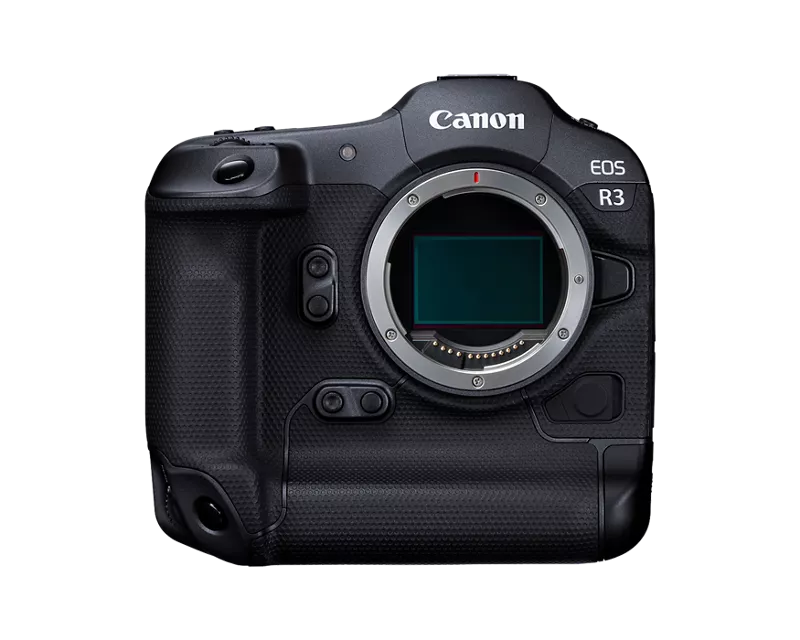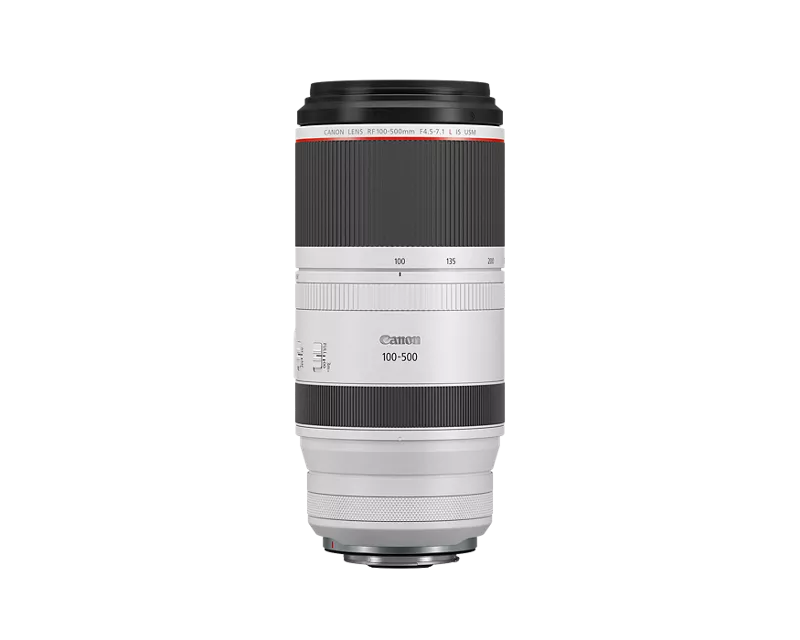- Canon Community
- Discussions & Help
- Camera
- EOS DSLR & Mirrorless Cameras
- R3 autofocus tracking lock on issues for sports
- Subscribe to RSS Feed
- Mark Topic as New
- Mark Topic as Read
- Float this Topic for Current User
- Bookmark
- Subscribe
- Mute
- Printer Friendly Page
R3 autofocus tracking lock on issues for sports
- Mark as New
- Bookmark
- Subscribe
- Mute
- Subscribe to RSS Feed
- Permalink
- Report Inappropriate Content
02-03-2024 09:07 PM
Hi there - I recently picked up an R3, primarily for shooting Ultimate Frisbee, which is probably most like soccer in terms of play style, but with faster moving players who speed up and slow down more (ie: all out sprint, until they catch the frisbee, then they stop and stand still for a few seconds until they throw it, and start sprinting again).
I'm disappointed so far in the ability of the AF tracking to "lock on" a subject and stay on that subject if another player(s) enter the frame between the subject and camera. I've tried pretty much every combination of settings I can think of (mostly Case 2 and Case 4), in combination with "Switching tracked subjects" set to 0 or 1, and in every case, there's no lock on, nor do any of these settings really seem to make much of a difference - if any other player enters the frame it almost always switches off the tracked player onto the new, closer player, even if the "new" player's back is to the camera (I have eye detection on, but have experimented with turning it off... no significant difference). If there's only one person in the frame, the AF seems to work fine... mostly. It doesn't maintain a great lock if the face is not "large" in the frame (in which case it often finds the face, but then randomly switches to some background object that is not remotely face like!), but if I'm zoomed in enough, it seems to work fine.
I can still get pretty good results using BBF and the center point, but this is basically what I was doing with my 5D Mk II, so was expecting much better results from the R3!
I have read the manual thoroughly, as well as watching many videos about the details of the autofocus settings and functions, so I'm pretty sure I'm not doing anything obviously wrong, but still open to any advice. Any suggestions for improving the performance of the AF tracking/lock on, or is it just not as great as some of the reviews I've seen have made it out to be?
Thanks!
- Mark as New
- Bookmark
- Subscribe
- Mute
- Subscribe to RSS Feed
- Permalink
- Report Inappropriate Content
02-04-2024 07:38 AM
The camera will only du what you ask. If you ask the wrong questions, then you will get the wrong answers. If I were using a narrow aperture lens to capture subjects at a distance, then I would disable all the eye and face tracking features. Try that.
"Enjoying photography since 1972."
- Mark as New
- Bookmark
- Subscribe
- Mute
- Subscribe to RSS Feed
- Permalink
- Report Inappropriate Content
02-04-2024 12:12 PM - edited 02-04-2024 12:14 PM
As I said, I can get pretty good results using no eye or face tracking... but that's how I've been shooting for 30 years. Was hoping for some technological advancements, and based on some of the reviews/videos/online discussions I've seen, I expected the face/eye tracking to be working much better than it is, so trying to figure out if this is user error (and if so what the error is) or if the camera just isn't as capable as I would have hoped. Also I should note that I'm mostly shooting in bright daylight at 2.8 (with an EF 70-200) or 4.5-5.6 (with the RF 100-500).
- Mark as New
- Bookmark
- Subscribe
- Mute
- Subscribe to RSS Feed
- Permalink
- Report Inappropriate Content
02-04-2024 01:48 PM - edited 02-04-2024 01:56 PM
Post some sample images. It sounds like your subjects could be too far away from [you] for the eye tracking to be effective.
Also, if you are using narrow aperture lenses shooting subjects that are at some distance from you, then DOF becomes great enough to make eye tracking a moot point.
My DOF table (dofmaster dot com ) shows a DOF of just under 4 feet at a distance of 50 feet, when you are shooting with a 400mm focal length and an aperture of 7.1. The DOF increases to over 13 feet when your subject is 100 feet away. If you were shooting with a 400mm at f/2.8, then the DOF would 0.5 feet and 4 feet respectively.
Eye tracking might make a difference when you subjects are within 50 feet using an f/2.8 aperture. Most any other scenario means the camera would probably struggle to lock onto eyes and track them. Your subjects would be simply too far away.
"Enjoying photography since 1972."
- Mark as New
- Bookmark
- Subscribe
- Mute
- Subscribe to RSS Feed
- Permalink
- Report Inappropriate Content
02-04-2024 02:51 PM - edited 02-04-2024 02:53 PM
Face and/or eye tracking is great for sports where players generally stay in their lane (like track or swimming) but is far less useful for any sort of "multi-player interaction" sport. And realistically you often WANT to switch players quickly in many sports as the ball is passed/stolen/fumbled making specific subject tracking often undesirable.
Intelligence assisted tracking faces a major issue in many sports because you want it to:
1. Track the subject even though the subject is behaving erratically in terms of both speed change and direction.
2. Ignore temporary interruptions when other players or officials temporarily block the view of what you were tracking.
So to avoid switching to a different subject, tracking must resist making a major change when there is an interfering subject blocking your target. But during the time your target is blocked, he/she may have radically changed velocity and direction from prior to the blocking event so the camera now has to search for the initial subject who has moved away from the predicted path/location.
Under the right conditions, eye (also face and head) tracking is amazing but those conditions don't happen very often in a lot of sports. And even if the camera were perfect at staying locked on a specific subject, that wouldn't be something desirable for a lot of sports shooting scenarios. If your goal is to "document" a single player for a client, subject tracking is very useful but if you are shooting the event instead of the player then in many sports subject tracking isn't desirable because the photographer still has to decide which subject.
I acquired my first 1DX III body just before the pandemic and had plenty of time to spend with the white paper on its AF capabilities along with later doing a lot of testing. I was often impressed by what technology could do but the level of AI embedded within ANY camera body isn't up to following the "sport" because it doesn't fully understand the sport nor can it read the user's mind as to what they want to document during a specific play or time. For the next few years, sports photographers are still going to have to exercise a lot of their own control to capture good images. In the studio or for a lot of posed and static images, eye detect ensures the photographer won't have the camera focused elsewhere on the subject or scene but this sort of technological wizardry is far less applicable to most sports.
Rodger
01/27/2025: New firmware updates are available.
01/22/2024: Canon Supports Disaster Relief Efforts in California
01/14/2025: Steps to resolve still image problem when using certain SanDisk SD cards with the Canon EOS R5 Mark II
12/18/2024: New firmware updates are available.
EOS C300 Mark III - Version 1..0.9.1
EOS C500 Mark II - Version 1.1.3.1
12/13/2024: EOS Webcam Utility Pro V2.3b is now available to support Windows on ARM PC users.
12/05/2024: New firmware updates are available.
EOS R5 Mark II - Version 1.0.2
11/14/2024: Windows V 2.3a installer for EOS Webcam Utility Pro is available for download
11/12/2024: EOS Webcam Utility Pro - Version 2.3 is available
09/26/2024: New firmware updates are available.
EOS R6 Mark II - Version 1.5.0
08/09/2024: Firmware update available for RC-IP1000 - Version 1.1.1
08/08/2024: Firmware update available for MS-500 - Version 2.0.0
- Upgrading to Mirrorless for Sports, Concerts and Theater in EOS DSLR & Mirrorless Cameras
- Canon r10 frequently failing to find focal point? in EOS DSLR & Mirrorless Cameras
- R5 m2 vs R6 m2 Advice please! in EOS DSLR & Mirrorless Cameras
- EOS R6 Mark II requires multiple shutter presses to focus in low light in EOS DSLR & Mirrorless Cameras
- EOS Rebel T7 Focus won’t lock indoors/in lower light in EOS DSLR & Mirrorless Cameras
Canon U.S.A Inc. All Rights Reserved. Reproduction in whole or part without permission is prohibited.



